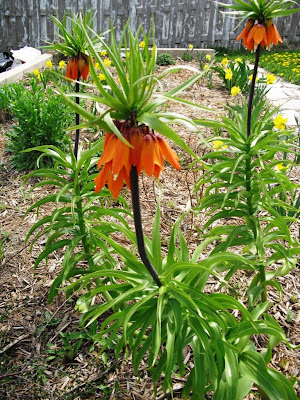The Fern Room is especially beautiful, and, I think, worthy of a post all its own. Here are just a few of the pictures I took.
 The entrance of the Fern Room, which also houses a variety of cycads, fern allies such as Selaginella, mosses, and a few tropical flowering plants, such as Monstera deliciosa, for variety. Edited to add: Since this post was published, I replaced this photo with a larger version, which looks particularly detailed when clicked.
The entrance of the Fern Room, which also houses a variety of cycads, fern allies such as Selaginella, mosses, and a few tropical flowering plants, such as Monstera deliciosa, for variety. Edited to add: Since this post was published, I replaced this photo with a larger version, which looks particularly detailed when clicked. A view of the room from another vantage point, showing the indoor lagoon that forms the center of the display.
A view of the room from another vantage point, showing the indoor lagoon that forms the center of the display. Asplenium nidus, in a bed of Selaginella
Asplenium nidus, in a bed of Selaginella A cycad, Dioon spinulosum
A cycad, Dioon spinulosum Another Dioon spinulosum, showing new growth spouting from the "trunk"
Another Dioon spinulosum, showing new growth spouting from the "trunk" Ferns and Cycads around a bench, with duct work in the background. Part of the beauty of the conservatory in general is the age of the structure, and the fact that the workings, are for the most part out in the open and unobscured.
Ferns and Cycads around a bench, with duct work in the background. Part of the beauty of the conservatory in general is the age of the structure, and the fact that the workings, are for the most part out in the open and unobscured. Closer view of the area above the bench
Closer view of the area above the bench Platycerium (Staghorn ferns) with other Ferns and mosses in the foreground
Platycerium (Staghorn ferns) with other Ferns and mosses in the foreground Showing off the epiphytic nature of Platycerium on a Fern "tree." I've seen this done before with Bromeliads and Orchids, but never with Ferns.
Showing off the epiphytic nature of Platycerium on a Fern "tree." I've seen this done before with Bromeliads and Orchids, but never with Ferns. Cycad, with cone. I believe this is another Dioon, but I forgot to note the label, so I'm not positive.
Cycad, with cone. I believe this is another Dioon, but I forgot to note the label, so I'm not positive. Young Pteris and Adiantum ferns, emerging from looks like moss, but which are actually gametophytes, the life stage that comes between spores and mature ferns.
Young Pteris and Adiantum ferns, emerging from looks like moss, but which are actually gametophytes, the life stage that comes between spores and mature ferns.Edited to Add: There is some actual moss in the picture, along with the gametophytes.








